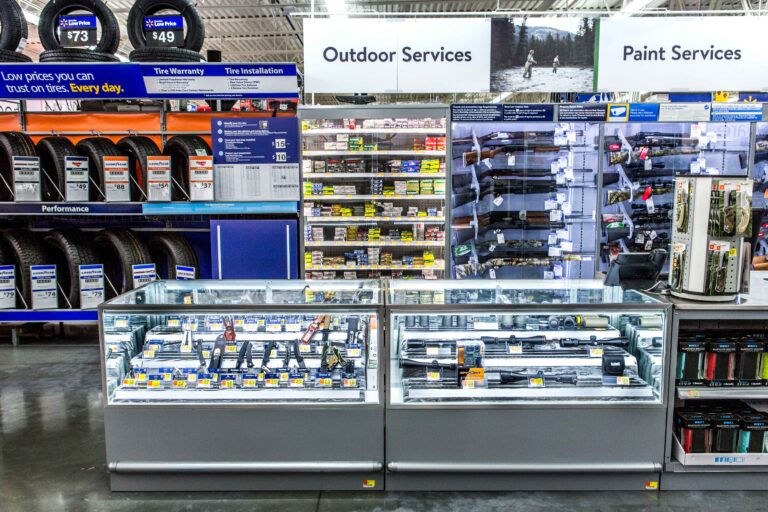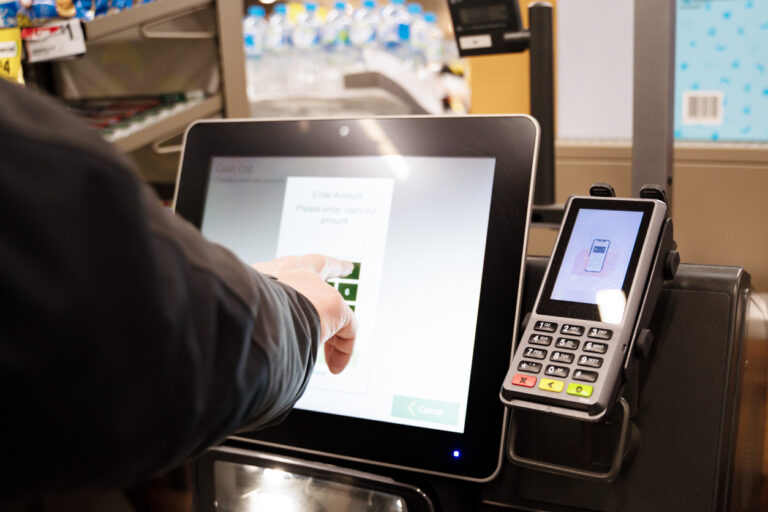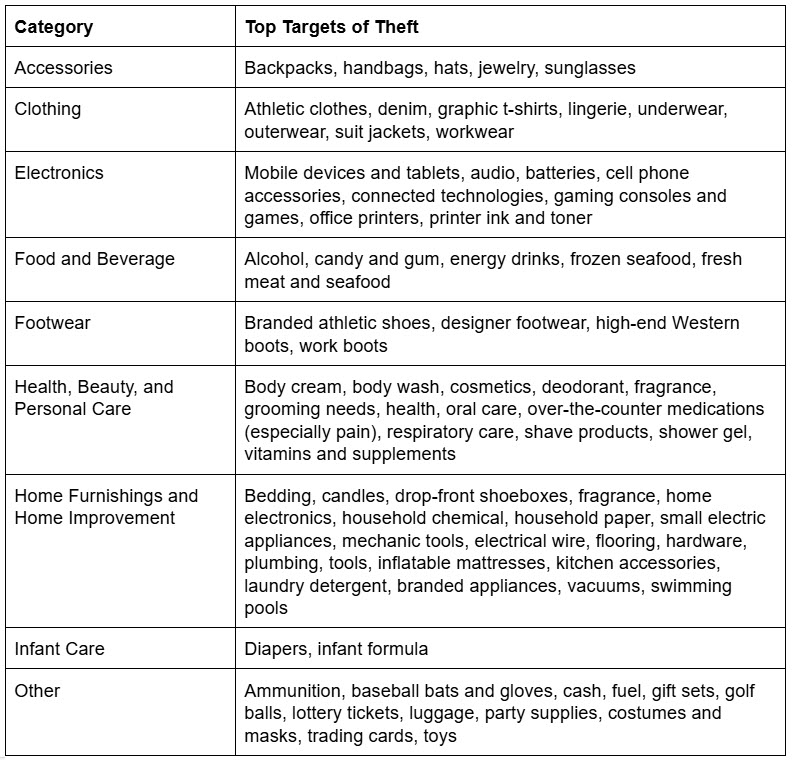Organized retail theft can leave your team feeling violated and anxious. It’s natural to have a heightened sense of urgency to react when these events occur.
But responding rapidly without a clear plan can lead to mistakes.
In this post, we review 5 critical errors to avoid when strengthening your loss prevention approach and offer solutions for each.
1. Don’t choose one theft prevention response and apply it in all areas
A one-size-fits-all approach to protection can backfire. It could be excessively stringent to the point where it aggravates customers and consumes too much staff time, or not tough enough to effectively deter theft.
Not all areas are equally vulnerable to theft, and not all hotspot areas require the same approach. Laundry detergent and handheld electronics may both experience high rates of theft but require different protection solutions.
Take a look at your store and your theft statistics and ask yourself these questions:
- What items are stolen most frequently?
- Which areas or departments are most vulnerable or most often affected?
Evaluate the specific risks in each area of your store to tailor your theft prevention response accordingly.
Identify the items most frequently stolen
Deodorant, detergent, and infant formula may disappear from shelves to be rapidly resold on the street or online. This chart from the National Retail Federation Survey 2023 identifies the most frequently stolen items.
Identify the most vulnerable areas in and around your store
Take a stroll around your store and observe. Are there dressing rooms or secluded areas of the premises that could make theft easier?
Check the lighting in areas such as storage rooms, docks, and parking lots for gaps in coverage. Areas that remain in darkness offer thieves concealment.
Make sure doors are appropriately monitored or secured and verify that outdoor lighting works correctly. Thieves may selectively target those store locations that afford easy paths to escape.
Once you know the weak points, you’ll have a better idea of the safety measures you can take–whether that means different displays with added security, additional staffing, technological solutions, or a combination.

2. Don’t focus on DIY solutions for theft prevention
You may understand the ins and outs of your business better than anyone else, but choosing to handle theft protection without professional help puts your team, customers, and operation at risk. It takes more than a few extra locks to solve the problem.
Preventing loss from organized retail crime is far from simple or straightforward. You know when to turn to a medical pro for a broken leg or a heart attack, and the same principle applies here. Don’t miss out on the breadth of expertise that experienced professionals can provide.
Bring in assistance to track and report incidents
Documenting all the details could make a critical difference, but meticulous recording takes time. Seek out help from a third party or specialized service to take the burden off your team and ensure that investigators have the details they need to detect patterns and potentially build a case.
Put technology to work for theft prevention
As you craft a theft prevention approach to meet your specific requirements, another advantage of working with professionals is the fact that you gain access to the latest technological tools.
New interventions are constantly being developed. Specialists in advanced technology offer a range of customizable solutions to suggest for a wide array of specific problem areas such as critical departments, checkout areas, or parking lots. Current solutions include the following:
- Custom security displays and controlled locking systems limit access to stored items and merchandise on display
- Systems of cameras and visual sensors can be used to monitor activity and provide alerts when threats are detected
- Weapons detection systems stop weapons from entering your premises
- Facial matching systems, limited to a known list of “bad actors,” can be used for comparison after an incident
- Software for license plate recognition can help monitor movement of vehicles containing goods stolen from your premises
- Smart technology and IoT sensors help track inventory levels in real time
- Carts with locking wheels, triggered by visual sensors, can lock when product leaves your store in an unauthorized manner
- RFID tags using smart barcodes allow movement to be tracked
Not every technology is going to be suited to your application, but making the effort to identify appropriate systems that suit your operation and your challenges will pay dividends. Information gathered could help you identify and address situations before they become problems.
3. Don’t keep your security measures stealthy and secret
You might think that keeping security measures subtle or quietly in the background would be an advantage, perhaps catching potential perpetrators unaware.
In fact, the opposite is true. Simply making theft prevention measures clear and visible is in itself an effective deterrent.

Use visible security measures to deter theft
Methods for theft prevention used by the Loss Prevention Research Council include making the perceived effort to commit theft far exceed the reward. Visible protection measures like these communicate the increased risk of getting caught:
- Cameras in plain view
- Security personnel positioned strategically
- Locked display cases protect and display merchandise
- Mirrors make hidden areas easier to monitor
- Signage highlights security and reinforces the message of criminal prosecution
Choose a combination of visible measures to meet your requirements and then be prepared to refresh your approach as your needs change and as technology introduces new options. For example, electronic locking systems on security cases offer many options for customization.
Map out security within your store
Take a hard look at your store layout. Determine the types of deterrents best suited to specific areas such as checkout zones or specialized departments. Also look for blind or hidden areas that could offer concealment to thieves.
Ample lighting and clear sight lines within a store layout can make theft more difficult. Modifications that reduce time in checkout lines help reduce the opportunity for stealing while people wait in line.
Partner with experienced suppliers to develop cash wrap stations, checkout counters, shelving, fixtures, and security cases that work with the visible deterrents you have in place.
4. Don’t prioritize reaction time at the expense of planning
While a swift response is important, speed should not take the place of planning. Retail theft is an ongoing challenge–not a one-and-done event. You need to develop a smart and balanced approach that can be applied and updated regularly.
Equip employees to handle tense situations
Training employees is an essential first step in building the confidence they need to face whatever situation may arise.
Create action plans and systems to protect your staff and your customers. Keep your team safe by providing appropriate training tools to de-escalate situations. Attempting to “deputize” staff by adding security duties to their job description is not the answer.
Collaborate, communicate, and document effectively
Talk to others in your community. Learn about their experiences and share the challenges your business faces. No business is an island; criminals may repeat a common approach, striking multiple businesses within a district. Be aware of retail crime reports affecting your area or industry.
Communicate and collaborate with law enforcement and within your community. Consistently reporting incidents that occur helps law enforcement to identify patterns that can help them anticipate and thwart theft. Build recordkeeping practices that are clear and complete.
Law enforcement agencies track nationwide crime rings that are sophisticated and elaborate. Potentially located in the most unexpected neighborhoods, they may look like any other business, investing in packaging equipment and material handling systems, and operating fleets of 18-wheelers.

5. Don’t trust your gut more than the numbers
Your instinct to protect people and products may drive you to take action, but factual observations and data analysis are key to effective results. Data analytics allow you to create targeted solutions instead of taking a general shotgun approach.
Choose smart systems to gather important data
Tech can help track inventory levels right down to the shelf to provide detailed information on patterns of movement or theft. Analytics in grocery applications can also track other forms of shrink, including spoilage.
Specialized tagging can be used in targeted areas such as health and beauty products, medication, or alcoholic beverages.
Track patterns and assess what you observe
Collect and track data then use this information to refine your assessment of which items are most pilferable or at greatest risk for theft.
Go deeper and tap into the pattern of purchases that act like data fingerprints to identify what fraudsters buy in order to camouflage their theft activities.
Data collection keeps the honest honest–even among staff, from retail associates to those working behind the scenes. Back rooms, storage areas, and loading docks are frequented by many people and not all of them are your own personnel.
Use data to help determine the types of protective measures to take and where those interventions should be placed.
Do plan your loss prevention approach to sidestep common errors
The goal is to simultaneously protect lives and prevent loss. It’s a balancing act to maintain a comfortable shopping experience for customers while ensuring their safety at the same time that you protect your team and merchandise.
Planning pays off. Harness technology and tap into the expertise of professionals to help identify and deploy solutions appropriate for your specific facilities.
Security displays are an integral part of many effective theft deterrent solutions. Offering custom solutions that incorporate steel shark cage construction to a variety of locking systems, L.A. Darling has the experience to help you tackle theft prevention head on.
